
Last weekend Lewis & I were play testing one of the four participation games that we are going to be running on Sunday 5th February at Vapnartak Wargames Show at York Racecourse. Our games feature the Viking Town / Seaport (click here for earlier blog with details of the town). During the day Lewis, Doug, Mike, John and myself will be running 30 minute taster games of Feudal Patrol and Pulp Alley. If you want to play longer, we have two scenario’s for each system.
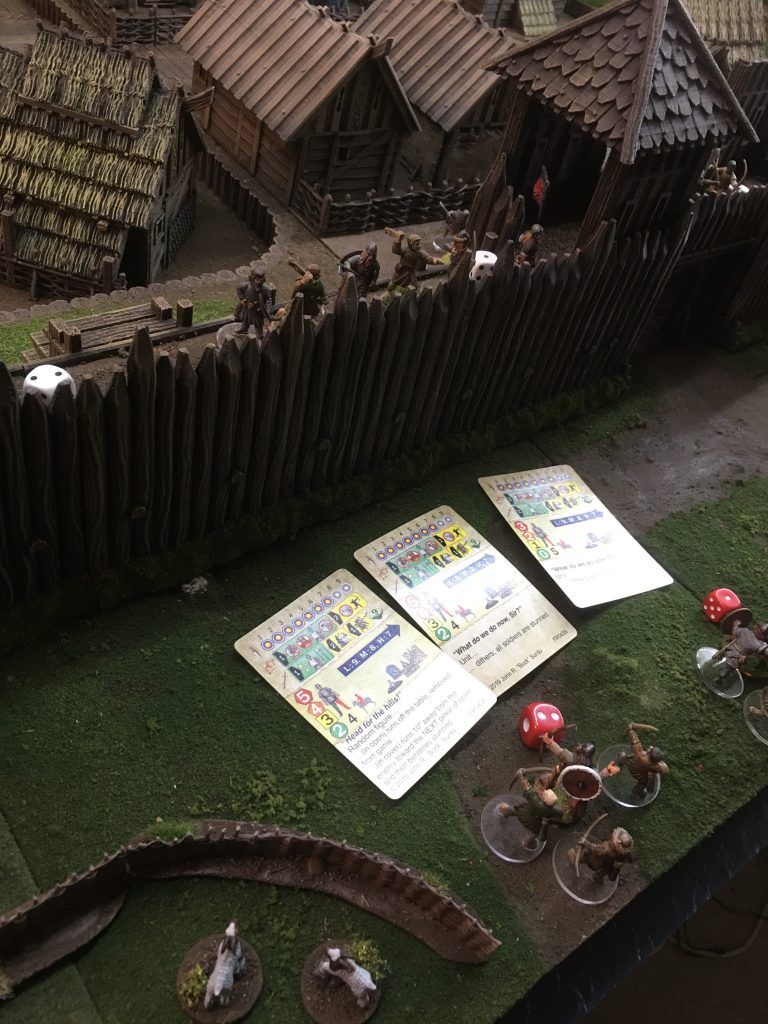
This game is one of the Feudal Patrol Scenarios. Feudal Patrol is an excellent set of skirmish wargames rules written by Buck Surdu that can be used for Ancients – Medieval… pretty much anything pre firearms plus swords and sorcery style fantasy. There are a number of free to download, period specific supplements available for Feudal Patrol, including a Viking Supplement that we are using for this game.
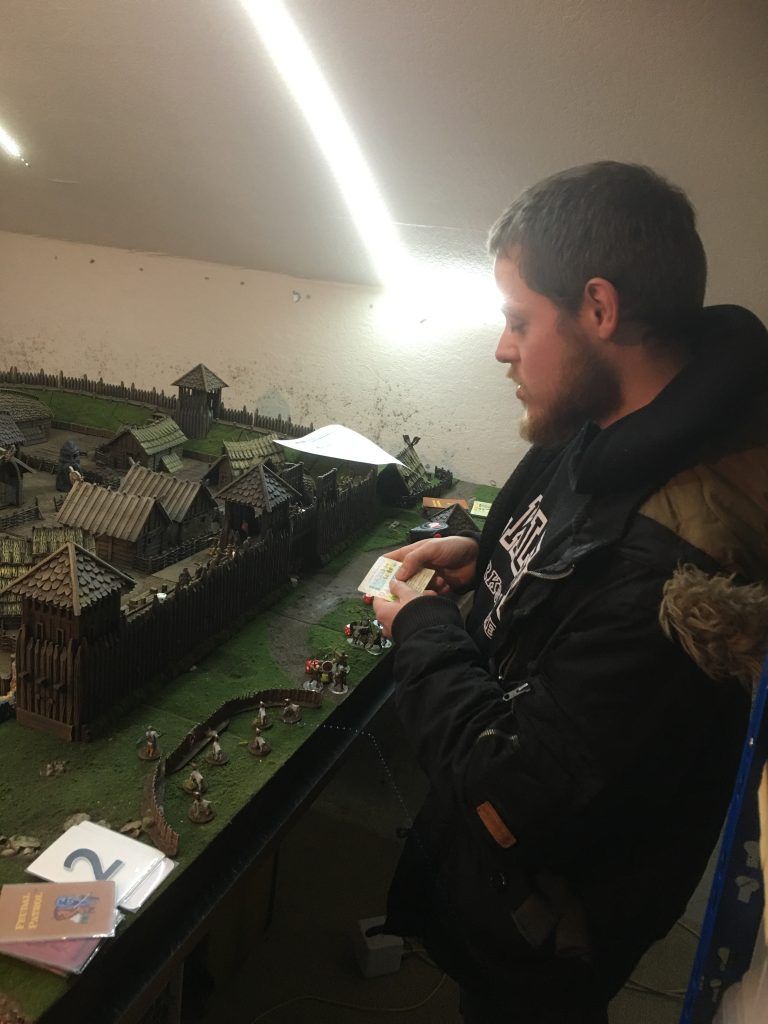
The scenario is an assault on the gate house and it’s surrounding walls. The raid is being carried out by a rival Jarl’s warriors, so both sides are Vikings. The defending townsfolk are less well equipped Bondi & Thralls. The attacker has sent his best Hirdman to lead the assault. Unfortunately for the defenders a traitor inside the town has unlocked the main gate.
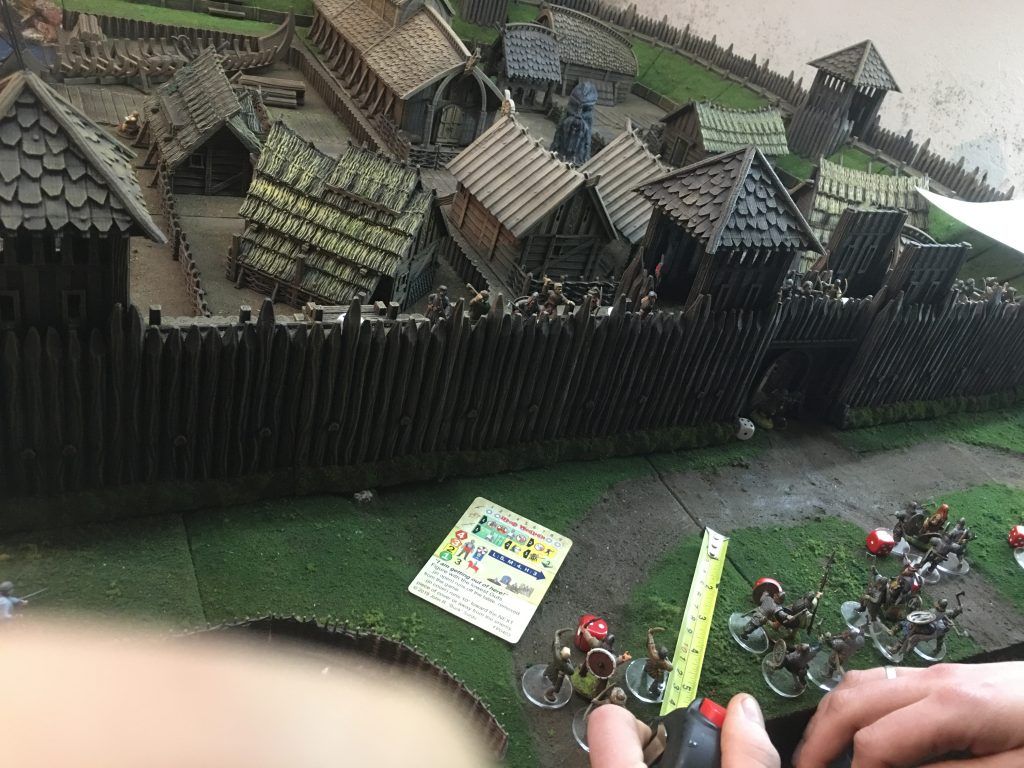
We also gave the attackers three ladders, to give them some choices regarding how they wanted to split there forces. We added a ‘house rule’ for ladders. To place a ladder you needed to draw an action card and consult the ‘to hit’ icons. These are a row of nine targets, between zero and nine of these are coloured in, the rest are grey. In combat, the coloured in targets count as successes. We decided that seven successes were required on a card to place a ladder, modified by +1 for each attacker assisting and -1 for each defender who would be in contact with the ladder. For the defenders to push the ladders down they also needed 7 successes, -1 for each defender assisting and +1 for each attacker on the ladder or in contact with base.

Lewis decided to focus his attach on the gateway, and a series of bloody melees were fought before the attackers forced there way in. The attackers also had a group armed with bows, who were used to good effect to keep the heads down of the missile armed defenders. The tokens that we can see in play are two ‘splat shaped’ morale test tokens. Every time a figure in a unit is hit, or would have been hit if not for cover saving them, the unit takes a morale test marker. When the unit next activates, these morale tests have to be reconciled before the unit can do anything else. The left hand archer has also been wounded recently as it carries both a wound and a stun marker. When a figure is wounded, it is also stunned and must use it’s next activation to remove the stun.
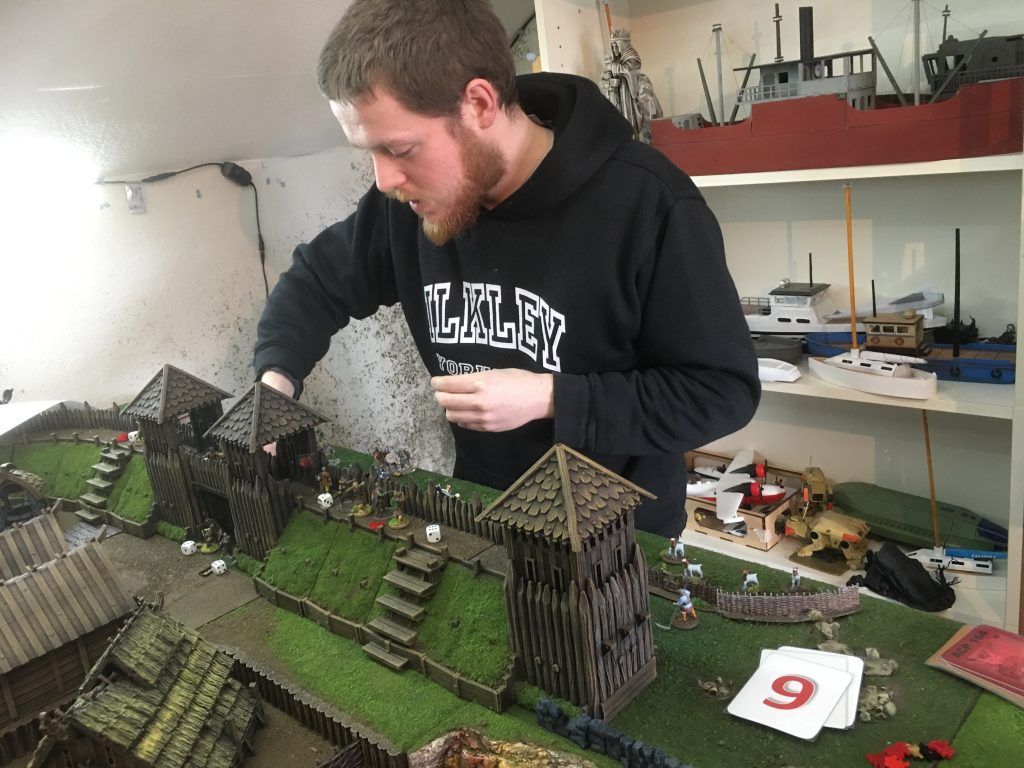
At this point Lewis’s attacking Hirdsman have forced there way past the defile of the gateway and are ready to burn and loot. In Feudal Patrol, melee is decisive. Combats are divided into as many 1:1 matches as possible. Fighters with longer reach weapons get a chance to strike first. Spears and Dane Axes are particularly lethal. Surviving defenders get to fight back. They are disadvantaged if they have been wounded. Any figure wounded in combat is pushed back 2″, any unwounded attacker can then advance 1″ (this is how attackers get over defended cover), and figures in a combat where no wounds were suffered then move back 1″, so no one is still in contact at the end of the melee. We found this worked really well and felt like a good representation of the cut and thrust of Dark Age melee.
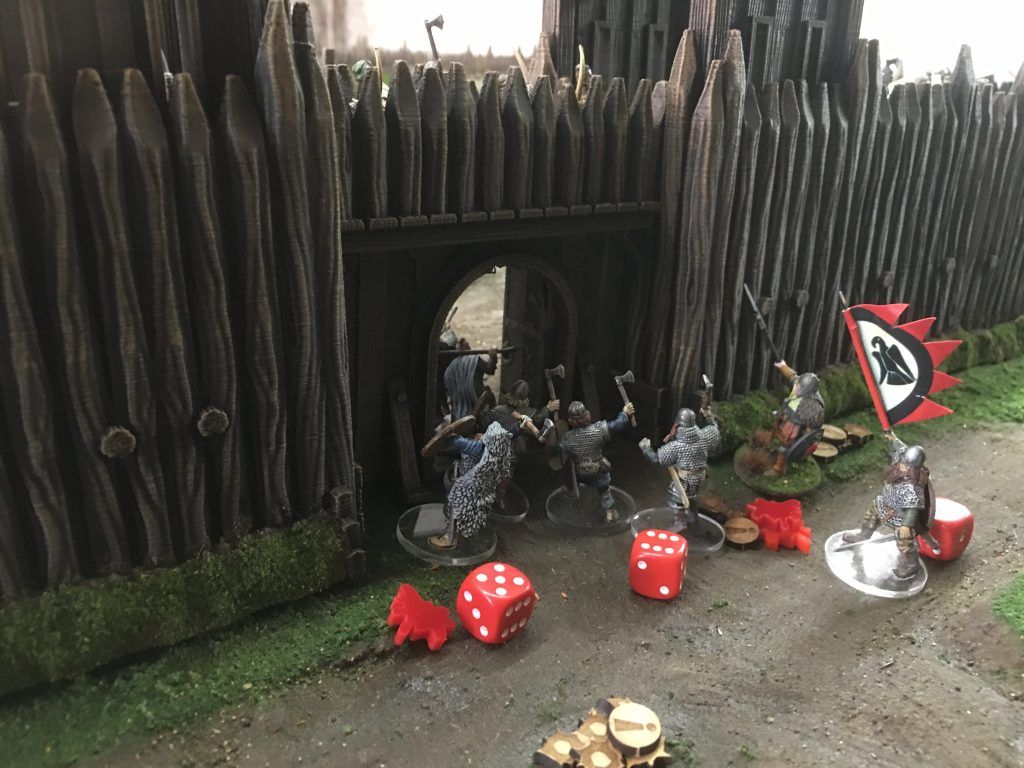
If you are in York tomorrow, please drop by and have a chat and roll some dice and draw some cards with us!


0 Comments